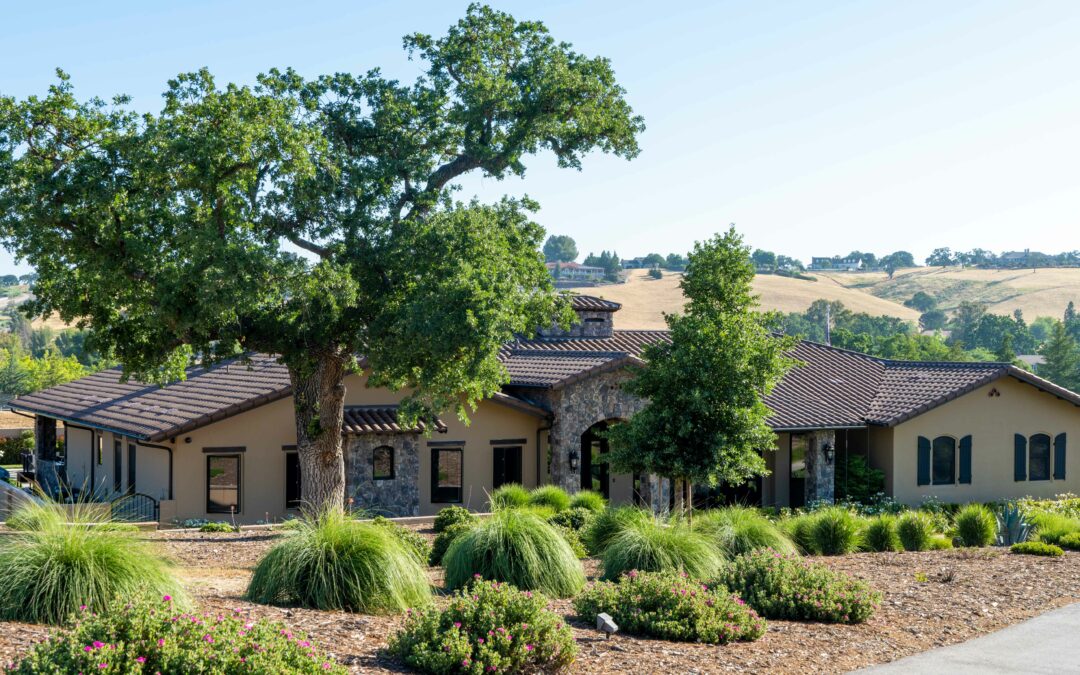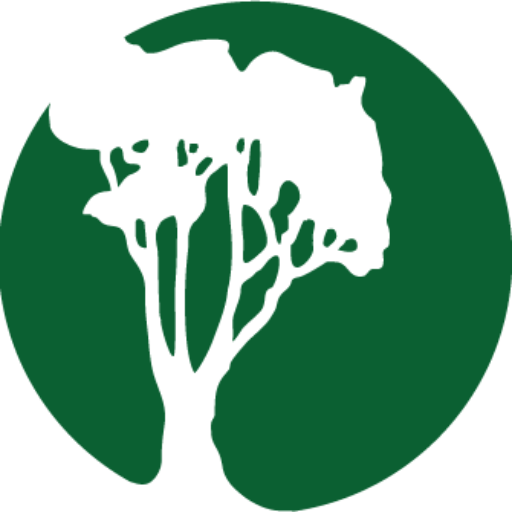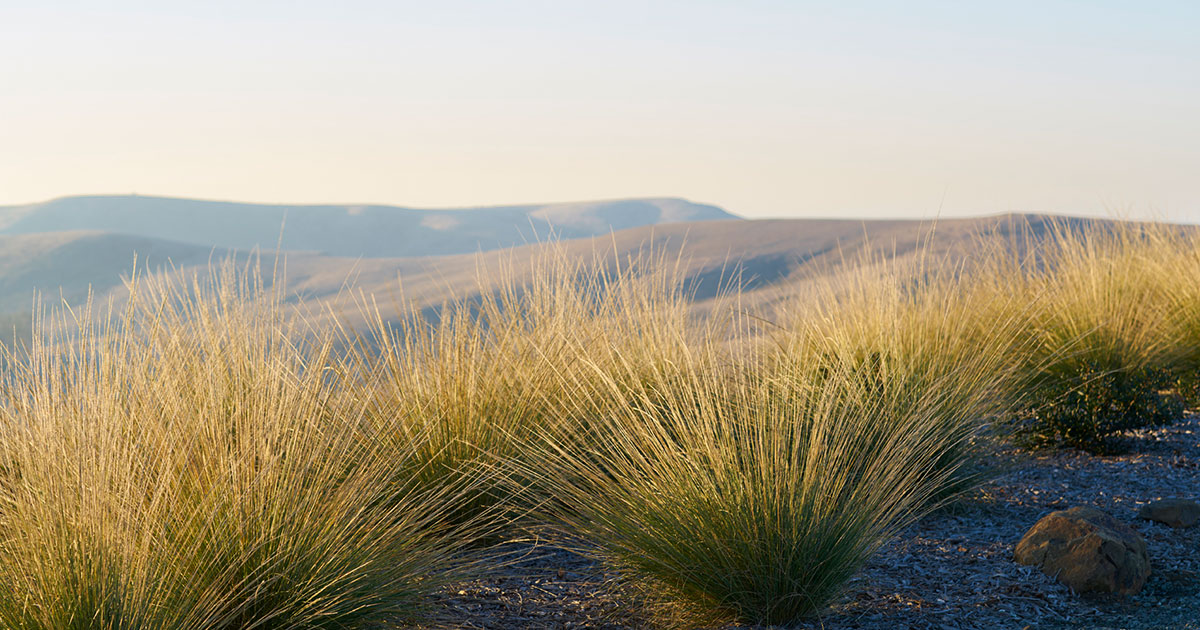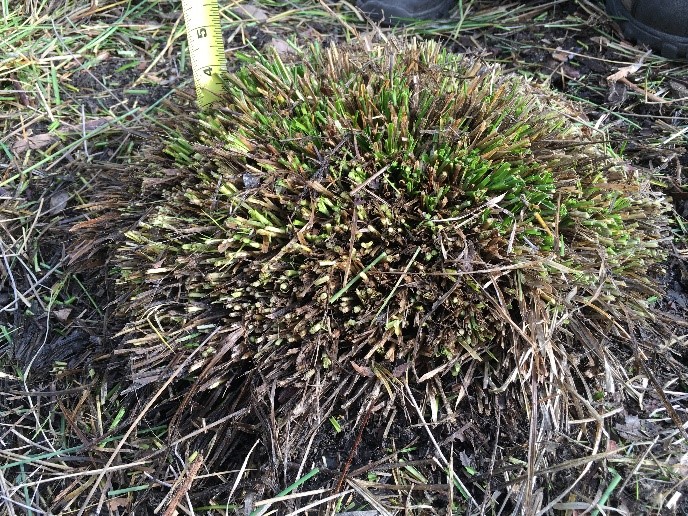
Mar 4, 2024
Set it, forget it. Give plants the nutrients without all the hassle.
Irrigation in California’s Central Coast is a crucial supplement to little rainfall. For plants and gardens that need more, applying controlled amounts of water also contributes to soil moisture from groundwater.
Fertilization, too, supplements its environment. Plants need a number of chemical elements to grow and thrive, from nitrogen to potassium. Fertilization can help otherwise struggling plants flourish by simply bringing the soil up to their needs.
Fertigation is the combination of both supplements, serving as a nutrient delivery system for landscapes. Fertilizer is delivered in the irrigated water and can use drip irrigation, spray nozzles, or heads.
How We Do It
Madrone Operations Manager Erik Gorham has provided fertigation services for almost a decade. He uses the EZ-FLO products to treat a wide variety of landscape issues. The process is as simple as our trained Madrone team installing a dispensing system in the valve box connected to the main line of a preexisting sprinkler system. “You really can forget about it, because part of our landscape maintenance program includes filling the unit with fertilizer every four to six weeks,” Erik shares.
We use Red Frog Compost Teas as part of our organic fertilizer program. The compost tea improves soil and plant health by improving nutrient availability and retention in the soil. “Biology feeds the plant,” explains Erik. “Typically, what plants need is in the soil. But if your soil is depleted, the worm castings offer an excellent soil amendment that is safe around children and pets.”
Savings on labor and energy costs can quickly offset the initial investment in a fertigation system. A homeowner who lives in an area affected by drought or water restrictions may prefer fertigation because they can better manage the nutrients and water supply going to their landscape—as well as increase water efficiency. It also gives them the ability to add nutrients directly into the root zone that may be otherwise difficult to access.
Erik sees it as an affordable investment to every landscape. “You chose your plants carefully. Help them mature more quickly and stay healthy by using this easy fertilizer system all year round.”
Learn more about our maintenance services. For more details, contact us at [email protected] or (805) 466-6263.

Oct 3, 2023
Maximize the Potential of California Landscapes with Mulch
Mulching is a game-changer for California central coast landscapes, offering a multitude of benefits that every gardener and landscaper should take advantage of. From controlling weeds to conserving moisture, mulch is a versatile tool that enhances the beauty and functionality of outdoor spaces. In this Guide to California Landscape Mulching, we’ll explore the key benefits, various types, and effective methods of using mulch in California landscapes.

Control Weeds and Conserving Moisture
Mulch is a gardener’s best friend when it comes to controlling weeds and retaining moisture. By applying a layer of mulch, you can reduce the growth of unwanted plants, particularly annuals, by up to 90%. This not only keeps your landscape looking pristine but also saves on landscaping labor costs and reduces the need for toxic herbicides.
Moreover, mulch plays a vital role in conserving soil moisture, helping you cut down on irrigation expenses. In regions like San Luis Obispo County, where water conservation is crucial, mulching can significantly reduce the amount of water needed to keep your plants healthy.

Promote Soil Health
Mulching is not just about aesthetics; it also promotes the overall health of your garden. As mulch decomposes, it enriches the soil with essential nutrients, improving its organic matter content and providing a source of sustenance for beneficial organisms. Additionally, mulch reduces soil compaction and insulates plants from extreme temperatures. This insulation effect can lower soil temperatures by up to 10 degrees, which is especially beneficial for young plants and trees.

Reduce Soil Erosion
Erosion is a significant concern, especially on slopes. Mulch acts as a protective barrier that keeps the soil in place during heavy rain and wind, reducing the risk of erosion. By deflecting the impact of raindrops, mulch minimizes stormwater runoff and helps maintain the integrity of nearby creeks and waterways.
 Enhance Aesthetics
Enhance Aesthetics
Beyond its practical benefits, mulch adds a finishing touch to your landscape. A well-maintained mulch layer creates a clean, uniform appearance that ties your garden together. It provides a polished look that complements the natural beauty of your plants and hardscape features.
 Choose the Right Mulch Material
Choose the Right Mulch Material
When selecting mulch for your California landscape, consider the style and design of your garden. While bark and wood products are common choices on the Central Coast, there are various other options to explore. These include stone, such as colorful rocks and gravel, as well as sheet mulching using materials like newspapers, cardboard, and plastic sheeting.
Recycled organic mulches, such as wood chips, compost, leaves, pine needles, and grass clippings, are eco-friendly choices that reduce the need for long-distance shipping. Using mulch from local tree trimming operations is not only sustainable but also contributes to maintaining the usefulness of these by-products.

Consider Fire Safety
In many coastal California communities, wildfire safety is a paramount concern. It’s essential to be mindful of the combustibility of organic mulch. Research conducted at the University of Nevada Cooperative Extension has shown variability in mulch type combustibility. To reduce wildfire danger, it’s recommended not to use any organic mulch within five feet of homes located in wildfire-prone areas.
 Determine the Right Amount of Mulch
Determine the Right Amount of Mulch
To maintain the benefits of mulch, aim for a 2- to 4-inch layer in your planting areas. Regularly inspect and refresh mulched areas as needed. Keep mulch at least two to three inches away from plant stems and trunks to prevent moisture-related issues. For trees in lawns, create a mulch circle around the base, with a diameter of about 2 feet for each inch of trunk diameter.
 Embrace the Power of Mulch
Embrace the Power of Mulch
Mulching is a versatile and cost-effective practice that enhances the beauty and health of California landscapes. It saves time and money, promotes soil health, prevents erosion, and adds a finishing touch to your outdoor spaces. Make the most of mulch to create thriving, sustainable gardens that are both visually appealing and environmentally responsible.
If you have any questions about our mulching services or want to learn more about our maintenance program, please don’t hesitate to contact us at [email protected] or (805) 466-6263.

May 30, 2019
Top tips for selecting a landscape maintenance team
From weekly to seasonal maintenance, to event preparation, or landscape enhancements: here are the top questions to ask to ensure you hire a licensed professional who will meet your needs.
1. How long have you been in business?
A company that has been in business ten years or more is likely a reliable, trustworthy contractor. Whether you are a homeowner who needs weekly maintenance or a commercial property owner who needs pest control, check the company’s portfolio to see whether they have expertise on projects like yours.
Madrone Landscape has been in business for over 40 years. We offer weekly gardening services for residential clients in North San Luis Obispo County and estate maintenance for the broader San Luis Obispo County, Northern Santa Barbara County, and Southern Monterey County. We also offer high quality commercial, municipal, and HOA maintenance services for all of San Luis Obispo County.
2. What kind of insurance and licensing do you have?
Your landscaping company should have workers compensation insurance, general liability insurance, bonded workers and appropriate state licensing. For weed, pest, and disease control, your maintenance contractor will need to be spray certified.
Madrone Landscape has workers compensation insurance and general liability insurance. Our landscape maintenance crews are bonded, and we maintain a California state landscape contractor license.
3.Do you have specialists on staff?
Professional landscaping firms will employ experts with degrees in landscape architecture and horticulture. They should have expertise in landscape irrigation, as well as thorough knowledge of the type of plants you have growing in your landscape design.
At Madrone Landscape, our degreed and trained landscape designers and horticulturists establish and maintain our clients’ landscapes in superior condition. Our landscape maintenance teams are led by Taryn Via, Maintenance Manager. With a background in property management, Taryn has over 13 years of experience working directly with homeowners, HOAs, and commercial property owners.
4.What services do you offer?
Homeowners, commercial property owners, and HOAs all require different services for different properties. Ensure the company you hire provides the services you require. Traditionally, maintenance projects may include mowing and editing, irrigation repair, fertilizing, dead-heading, and mulching. Larger projects may need specialized maintenance at different intervals throughout the year. Consider whether you need seasonal maintenance, event preparation, and/or regular landscape enhancement.
5.How do your maintenance crews practice sustainability? Do you offer alternatives to chemicals?
If sustainability is important to you, be sure to ask about alternatives to fertilizer and chemicals. Companies at the forefront of landscaping will employ methods such as compost tea fertilizer, integrated pest management, and organic fertilizers, ensuring your yard is a safe and healthy place for your family.
At Madrone Landscape, we are known for sustainable practices. We focus on plant health and the effective use of water. Our Healthy Gardens program introduces organic methods to fertilizer and weed, pest, and disease control.
6. Can you provide us with an estimate?
A professional landscape contractor will provide you an estimate tailored to your individual needs. After visiting your project, listening to your needs and requirements, they will ask you questions to determine your exact needs.
Madrone Landscape provides a customized written estimate for each project.
7. What does my contract include?
Once you’ve accepted your estimate, your landscape contract will provide you a contract outlining what to expect on each visit, ranging from weekly maintenance to seasonal maintenance, plant replacement, and irrigation repairs.
At Madrone Landscape, each contract is different – just like each project. Once we’ve discussed your estimate, we put together a custom contract specifically for you.
8. How do you communicate with clients?
Will you have an account manager assigned to you? Will they call you to schedule appointments, or simply send notices in your invoice?
Our Maintenance Manager, Coner Boaen, is the one point of contact for our maintenance clients.
9. Will you provide references?
In addition to checking Yelp to see how the company ranks, ask for references, including addresses. Check the properties to see if they are maintained at the level you expect for your own property, whether residential or commercial. Madrone Landscape recently was awarded “Top-rated Local” for ranking in the top-five landscape companies in the state for customer satisfaction.
We are happy to provide a list of references for you to call and testimonials for your review!
Do you have additional questions? Ask for Coner Boaen, Maintenance Manager, at (805) 466-6263.













 Enhance Aesthetics
Enhance Aesthetics Choose the Right Mulch Material
Choose the Right Mulch Material
 Determine the Right Amount of Mulch
Determine the Right Amount of Mulch Embrace the Power of Mulch
Embrace the Power of Mulch